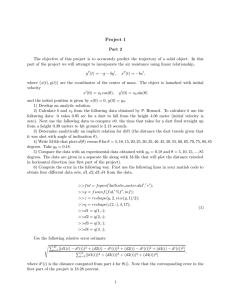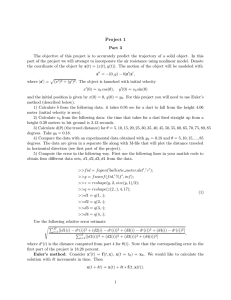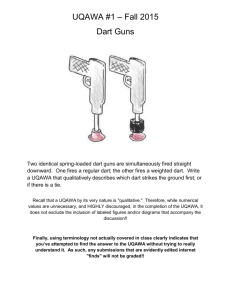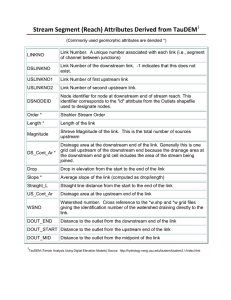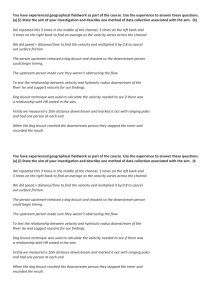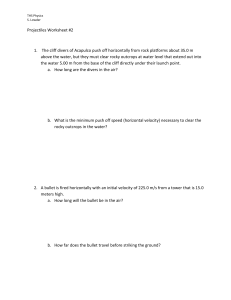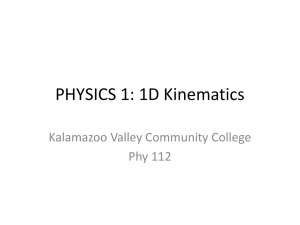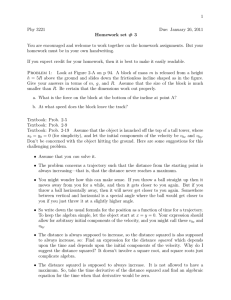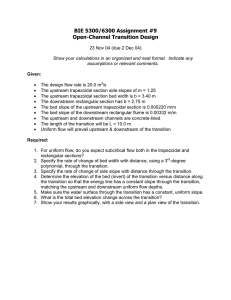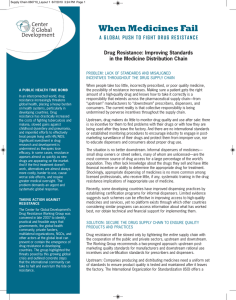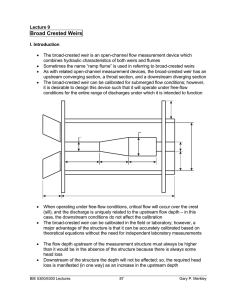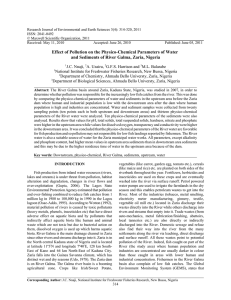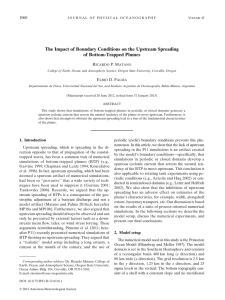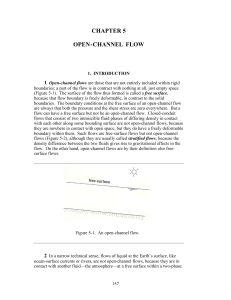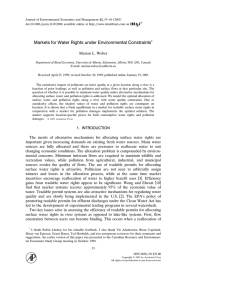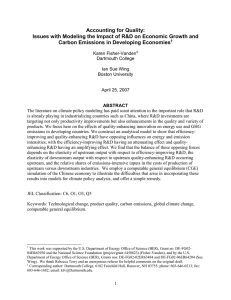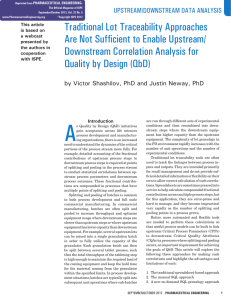PHY 2053, Section 3794, Fall 2009, Quiz 4
advertisement
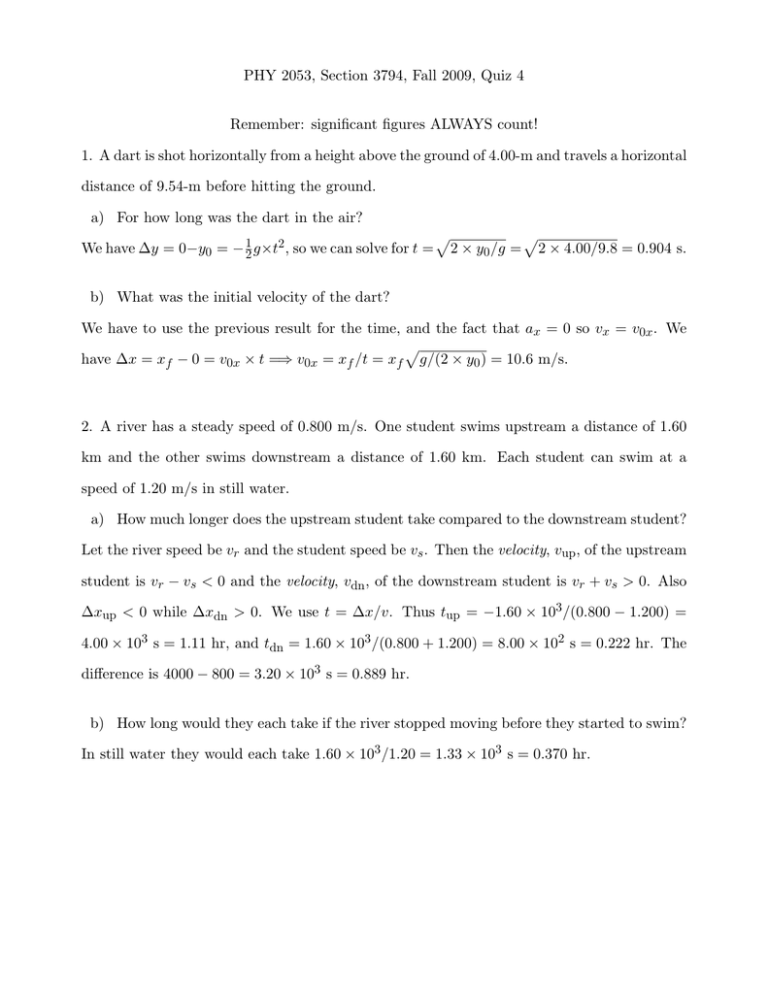
PHY 2053, Section 3794, Fall 2009, Quiz 4 Remember: significant figures ALWAYS count! 1. A dart is shot horizontally from a height above the ground of 4.00-m and travels a horizontal distance of 9.54-m before hitting the ground. a) For how long was the dart in the air? We have ∆y = 0−y0 = − 12 g×t2 , so we can solve for t = √ 2 × y0 /g = √ 2 × 4.00/9.8 = 0.904 s. b) What was the initial velocity of the dart? We have to use the previous result for the time, and the fact that ax = 0 so vx = v0x . We √ have ∆x = xf − 0 = v0x × t =⇒ v0x = xf /t = xf g/(2 × y0 ) = 10.6 m/s. 2. A river has a steady speed of 0.800 m/s. One student swims upstream a distance of 1.60 km and the other swims downstream a distance of 1.60 km. Each student can swim at a speed of 1.20 m/s in still water. a) How much longer does the upstream student take compared to the downstream student? Let the river speed be vr and the student speed be vs . Then the velocity, vup , of the upstream student is vr − vs < 0 and the velocity, vdn , of the downstream student is vr + vs > 0. Also ∆xup < 0 while ∆xdn > 0. We use t = ∆x/v. Thus tup = −1.60 × 103 /(0.800 − 1.200) = 4.00 × 103 s = 1.11 hr, and tdn = 1.60 × 103 /(0.800 + 1.200) = 8.00 × 102 s = 0.222 hr. The difference is 4000 − 800 = 3.20 × 103 s = 0.889 hr. b) How long would they each take if the river stopped moving before they started to swim? In still water they would each take 1.60 × 103 /1.20 = 1.33 × 103 s = 0.370 hr.
